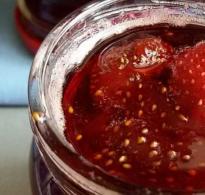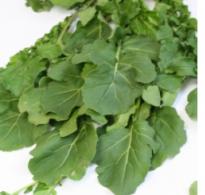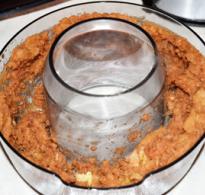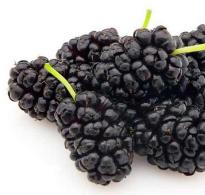What is pesto sauce served with? Pesto sauce: delicious recipes, features and composition
The famous Italian pesto sauce, which is more than two hundred years old, is an indispensable seasoning for many dishes, but is especially tasty with spaghetti, risotto rice and ravioli. The unforgettable Mediterranean color and taste of the sauce is given by the traditional Italian products included in its composition. By the way, the classic one is made exclusively in a marble or porcelain mortar, grinding its ingredients with a wooden pestle. Hence the name of the sauce, which comes from the verb pestare, which in Italian means “to grind”, “to press”. Modern housewives are trying to devote much less time to preparing dishes, and kitchens are now equipped with many convenient appliances designed to facilitate manual labor, so if desired, a mortar can be replaced with a blender or meat grinder.
The most common sauce recipe consists of green basil, pine nuts, Parmesan, garlic, salt and olive oil. Some of these ingredients may vary. So, in some Italian regions, fresh or hard Parmesan cheese is added to the sauce with soft sheep cheese. There are recipes without using nuts or recipes where almonds are used instead of pine nuts. In addition to the classic ingredients, arugula, spinach, walnuts or peanuts, dill, etc. are added to the sauce. But the most essential and indispensable product is, of course, cold-pressed olive oil, without which real pesto sauce is impossible. What do you eat this sauce with? These are, first of all, traditional Italian dishes - spaghetti, ravioli and risotto. However, pesto sauce is an excellent partner for various vegetable, fish and meat dishes, and it can turn the most ordinary side dish into a self-sufficient, delicious dish.
There are still quite a few recipes where you can use pesto sauce. What do you eat with classic pesto? It is often used for baking fish and meat dishes. For example, they bake cod or salmon by placing the fish in a mold and pouring pesto sauce on top. What else do they eat with? Chicken, pieces of beef or pork are very well marinated in this sauce, which are then baked in the oven. The meat becomes very tender and retains all its juices when cooked. Very tasty meat dishes are obtained if you spread thick pesto sauce on them before grilling. What else do you eat this delicious seasoning with? It is often used in sandwiches and snack cakes as a base for meat or vegetable layers, as well as in pizza with tomatoes and cheese. Finally, traditional warm Italian and seafood dishes also use pesto as a seasoning. It has the widest possible use; even spread on a piece of bread, the sauce gives it a piquant and very original taste.
How to make pesto sauce? The classic one is prepared from basil leaves, pine nuts, which are taken in equal proportions, grated sheep cheese and Parmesan, a clove or two of garlic, salt and olive oil, which is added while mixing all the ingredients of the sauce in such a proportion that it is not too thick and not too runny. All of the listed products are mixed in a mortar or blender until the consistency of thick sour cream.
Add a little sun-dried or fresh tomatoes to the red sauce. All ingredients are also mixed in a blender, vinegar and olive oil are added to the required consistency. The resulting red pesto goes very well with Italian pasta, as well as baked eggplants and meat.
The famous Italian sauce, which is rightfully considered the heritage of this national cuisine, has long crossed the borders of the state and conquered the whole world. Therefore, we will enjoy its taste and prepare a wide variety of dishes, using this magnificent sauce as a seasoning.
When I tried Pesto sauce for the first time in my life, I fell in love with it from the “first bite.” I’m still amazed at how much it can transform dozens of dishes. If we take the classics, then it is customary to prepare the famous Italian Caprese salad with it. Of course, Italians often eat it with pasta, salads, meat and seafood. It's also delicious spread on crispy toast. And here's something unexpected - buckwheat with pesto! It's just a flavor bomb. 🙂 You can experiment for a very long time, as long as you have enough imagination. Here's a little history of the sauce...
Pesto sauce comes from Italy. Which, of course, is not surprising, since Italians have been creating culinary masterpieces since time immemorial. In fact, everything is very simple, but brilliant! The base of the sauce is fragrant green basil. In addition to it, the composition includes good olive oil, pine nuts, although they are often replaced with other types of nuts, Parmesan cheese and salt with garlic. Pesto has a characteristic bright aroma and green color. In Italian, “pesto” meansI trample, I rub, I press. This is exactly how real Italian sauce is made. The technology is simple; as a rule, it is ground in a mortar and wooden pestle. But in general, you can get by with an ordinary blender, because not everyone has a mortar.

I personally don’t have any “correct” recipe. I always make pesto by eye. It always turns out great. The taste cannot be confused with anything else. For example, to get a small jar of pesto (150-200 g), you will need:
- 2 bunches green basil
- a handful of pine nuts (can be replaced with walnuts or cashews)
- extra virgin olive oil - the amount depends on how thick you want it to be
- Parmesan cheese (can be replaced with any hard cheese)
- clove of garlic
- salt to taste

Classic pesto sauce - the pride of the Genoese - with its special subtleties, as well as how to prepare pesto sauce recipe, what ingredients make it special and unique, how not to spoil pesto sauce, what true Italians eat it with and what is needed to ensure that the sauce always turns out unsurpassed appetizing and aromatic
Classic pesto sauce
The incredibly delicious pesto sauce is so simple and quick to prepare that it seems impossible to mess it up. However, the residents of his homeland have a long list of requirements that pesto sauce must meet, the recipe for which they religiously repeat over and over again. So, pesto sauce: what is it eaten with and are there any dishes that it can ruin? Do you need to strictly adhere to the classic recipe or can you improvise and create your own versions of pesto sauce? Although the Genoese are unlikely to appreciate the innovations, you can still try...
 Pesto sauce
Pesto sauce Pesto sauce was created in Italy in the charming and proud city of Genoa. The Genoese are very proud of their invention and no wonder: “ how to make pesto sauce?” is a topic of discussion in many culinary shows, where various nuances that are not entirely clear to the common man are constantly discussed. For example, what is better: pasta with pesto sauce or is it better to try making spaghetti with pesto sauce? If you already find fault with such nuances, then, of course, spaghetti, as a classic Italian food, is ideal for any Italian sauces. But, on the other hand, what dishes with pesto sauce can be tasteless?
Most often, pesto sauce is added to pasta; it goes well with crackers, bread, soups or lasagna. Ready-made pesto sauce is sold in small jars and is usually green in color. Although there is a variety of sauce with a red tint, which is given by sun-dried tomatoes.
History of the sauce
Italians say that pesto sauce has been known since the times of the Roman Empire, but no documentary evidence has been found for this version. However, the creators know better, and in general it’s better not to try to prove to an Italian, and especially a Genoese, that he is somehow wrong when it comes to pesto sauce. The conversation can end in a terrible scandal and resentment for life. On the contrary, if you want to arouse sympathy from your interlocutor, you can carefully say something about pesto sauce, how to use it and what must be done so as not to violate the cooking technology.
The Genoese are very picky and believe that pesto sauce is classic and has a right to exist, and all other variations on this theme only disgrace it. In the "Culinary Almanac" of Italy for 1937, the opinion was even expressed that Pesto sauce is as much an element of the city's coat of arms as the red cross that is depicted there.
Famous historical figure - Giuseppe Garibaldi– used pesto sauce to attract supporters to his side. This sauce was used to feed all supporters of the organization and lure new ones to the fragrant smell. Pasta with pestle sauce or flat pasta was served. Both were very popular with the Italians, and thus the cunning Garibaldi ensured a continuous flow of new members of the organization.
The history of the sauce itself remained a mystery for a long time. The first recipe that was recognized as “Pesto sauce: classic recipe”, believed to have been discovered in a cookbook from 1860. The author of the book is Giovanni Batista Ratto. The famous Italian author of a modern encyclopedic book about the tastes of the Genoese assures that there is simply no evidence confirming the existence of the sauce earlier. By checking the archives of all Ratto's records, Lingua proves that the sauce in the records appeared only at the specified time. Eloquent, like all Italians, Lingua colorfully argues that pesto sauce is a river, the flow of which is visible to everyone, but the source cannot be discovered.
However, the source from which pesto sauce emerged can be considered an ordinary garlic sauce, which the housewives of Italy prepared back in the 13th century. It became the basis of the great sauce, to which basil was later added to give it a special green color.
However, all these studies are of no importance to the Genoese. They know for sure that pesto sauce is as old as time and it won’t be possible to convince them. Ligurians believe that the sauce was created by their distant ancestors from the Pestelli tribe, who constantly collected basil and crushed it in a mortar with their fingers, and then tried adding different ingredients to it.
Maybe there is some rational grain in this reasoning, since pesto sauce must be prepared using a pestle. By the way, the name of the sauce allegedly comes from the recipe for its preparation. Pesto – short for pestle.
 Pesto sauce
Pesto sauce The recipe for pesto sauce requires the presence of a pestle. Without it, the sauce will not be the same. What is the secret here and why modern combines are powerless to replicate the effect of an ordinary wooden mortar is unknown, but the fact remains. The taste is really completely different.
When Vysotskaya gave the recipe for pesto sauce in a famous broadcast, she emphasized several times that Make sure to prepare the sauce with a mortar and pestle and clearly demonstrated the results. That it turned out delicious, you’ll have to take her word for it, but those who have tried making pesto sauce at home and notice the difference themselves.
If we return to the tribe of Ligurians, who walked around with a mortar and pestle and actively pounded some kind of mixture, then it should be noted that they did not do this for culinary purposes. In this way, the mixture was prepared for defensive purposes and the basil definitely did not appear in the mortar. So the composition of pesto sauce was not invented by the Ligurians. Although this legend has its continuation in the mouths of the Genoese. They believe that basil was still added to the defensive mixture, and one day one of the Ligurians simply tasted it. So, they say, pesto sauce appeared.
True gourmets believe that the notorious sauce is not prepared, but created. The famous sauce taster Angelo Consiglieri advises not to use cookbooks, but to create a sauce based on aromas. And just like that, add everything you need from memory. However, this is already a high level of professionalism, which is not so easy to achieve. Therefore, beginners, which include ordinary housewives, all over the world prefer to read a cookbook or recipe on how to make pesto sauce.
Pesto sauce - composition
Consigliere states that the sauce should contain garlic, olive oil, pine nuts, basil, pecorino and grana cheeses. Add herbs, except basil, the maestro categorically prohibits, claiming that this would cause irreparable harm to the sauce. Moreover, this particular Italian pesto sauce recipe was included in the list of protected original products, so it should be considered a classic.
In Italy there is even an Order of the Fraternity of Pesto. One of the most famous acts of the Order was obtaining the right to call the sauce not pesto alla genovese, and pesto genovese, that is, not sauce " a-la"Genoese, but simply the one and only sauce from Genoa. The Italians considered such an act vital in the interests of the sauce and Genoa.
Before you start preparing pesto sauce, you should have marble mortar and pestle. There should not be any advances in household appliances within a mile radius of the sauce, the maestro believes. However, since pesto sauce will be prepared exclusively for oneself without serving it to the table of a great master, one can violate its prohibition. The fact is that the sauce needs to be ground manually for several hours, which is completely unnoticeable when Vysotskaya prepares the sauce and does it in a few minutes. But recognized masters require precise execution of the classic recipe. For example, Oliver James's pesto also has a long cooking time. Returning to the issue with the blender, it should be noted that its help in cooking is invaluable. In half an hour he can do it quite well.
Another piece of advice from the master is to be less distracted while preparing the sauce. Otherwise it will turn out to be nonsense.
Pesto sauce - recipes
So, how to prepare pesto sauce in the classic version.
- A bunch of basil is washed, dried and ground in a mortar to preserve the basil juice. If you throw it in a blender, it will dry out and lose its taste.
- Add a handful of pine nuts, 1-2 cloves of garlic (depending on the size of the clove), salt and mix everything until smooth.
- After this, you can add half a glass of olive oil, 3 tbsp. spoons of pecorino and 6 tbsp. spoons of grana cheese.
Everything is mixed into a homogeneous mass. And you're done. If the question arises about what pesto sauce is eaten with, then the answer will be: “it all depends on who is cooking and who is eating.” If only fans of classic recipes and dishes have gathered and are afraid to move even one step away from the original, then you need to paste. Moreover, also classic Italian. Or lasagna or pasta. If there are progressive experimenters in the kitchen, then you can eat with anything. For example, any salad with pesto sauce will be completely transformed and you will get a new dish. Why not try to create something surprising and original?
Don’t forget that the main component of the sauce is not the pine nuts that everyone loves so much, or some original cheese. Italian pesto sauce is primarily basil. Cooking begins with it, it gives color to the sauce and special taste qualities that are easily recognizable in any dish. Moreover, purple basil should not be used under any circumstances, as it gives a completely different taste, completely inappropriate in this sauce. In Italy, such basil is almost never used - this is the prerogative of the Slavs and Caucasians.
Here's a classic pesto recipe from an old cookbook.
- young basil leaves from the Pra region
- extra virgin olive oil from Liguria
- Italian pine nuts (pine seeds)
- Parmigiano Reggiano or Grana Padana cheese
- sheep pecorino cheese Fiore Sardo
- dried garlic from the Vessaliko region
- coarse sea salt
How to make pesto sauce?
If you pay attention to the selection of ingredients, it becomes clear that classic pesto sauce will never be prepared in the vastness of the Russian Federation and neighboring countries. Perhaps for some oligarch who will send a helicopter and a team to collect ingredients throughout all the provinces of Italy. Fortunately, our people are generally unpretentious, so Fiore Sardo doesn’t pick too much on such nuances as the presence of pecorino cheese. Here they get by with standard Russian, or at best, Parmesan, and think that there is no difference. And in most cases it is much easier to buy pesto sauce altogether. Although hardly anyone will deny that no one has yet come up with anything tastier than homemade sauce. Therefore, it is better to discard Vessaliko, Fiore Sardo and Pra, and try to replace all the listed ingredients with your own. Moreover, even such authorities as Vysotskaya are unlikely to list basil from the Pra region. By the way, those who know where to buy pesto sauce in Moscow know very well that the ingredients there have long since departed from classical standards.
Pra basil is considered lemon basil, but if you can’t find it, you can simply add a little mint to the usual one. You can experiment with cheese, but it’s better, of course, to use some kind European version of hard cheeses and refuse Russian, Suluguni or sour cream. Olive oil is selected only better so that it does not leave bitterness in the mouth, otherwise it will spoil the entire taste of the sauce. Pine nuts from Italy are several times larger than ours, so if you couldn’t get them, you can replace them with regular Siberian pine nuts. Most domestic chefs generally use cashews. Walnuts are not recommended as they are slightly bitter. Sheep cheese can be omitted altogether. If you managed to find Fiore Sardo, you can add one third of the volume of Parmesan. You can use any garlic at all; it is unlikely to be very noticeable. The salt should be sea salt and preferably coarse. Then the process of grinding the leaves will be significantly reduced. If you put all this together, it turns out that the pesto sauce is slightly spoiled by the price. Only very rich people can prepare such a sauce. If you replace all the ingredients with domestic analogues, you will get not pesto, but something completely different. It may also be very tasty, but has nothing to do with the famous sauce.
Very often, Italians themselves dilute the sauce with some additional ingredients. It could be mushrooms, olives, cilantro or anything else. So you can continue experimenting in the kitchen.
Dishes with Pesto sauce
 Spaghetti with Pesto sauce
Spaghetti with Pesto sauce The Italians offer classic spaghetti recipe with pesto sauce. There is nothing complicated here.
The spaghetti is boiled as usual, during the cooking process a little olive oil is added, some spices to taste, salt, and after the spaghetti is ready, they are poured with the sauce that was prepared in advance. It turns out very tasty and even looks appetizing.
By the way, the peculiarities of Italian cuisine are such that there are no exact instructions in the form of grams, number of tablespoons, etc. simply doesn't exist. Any Italian chef would consider it a great disgrace to weigh ingredients or measure them with spoons. That is why the same dish, served in different trattorias in Italy, turns out completely different. Italian chefs try everything, smell it and figure out what else to add and what is already enough. So, whether spaghetti or pasta with pesto sauce, the recipe will not differ much. But the taste may well be so. Chefs themselves are surprised when they turn out the same dish the same way twice in a row.
 Salad with Pesto sauce
Salad with Pesto sauce But you can find more than one recipe for salads with pesto sauce. But it’s better to try to experiment on your own and thereby become like the professionals from Italy. Why not? They can do it too. Although several recipes for preparations can be taken from already known ones.
For example, Tomatoes, cut in half, and pieces of mozzarella are laid out on the dish. Everything is topped with balsamic vinegar and pesto sauce. This salad is served in restaurants and is called caprese.
Another recipe. Boil the pasta. Drain and place them in a large bowl. Add pesto, olives, green peas, pine nuts. Season the salad with olive oil, salt and pepper. You can decorate with cherry tomatoes.
Or this option:
- Cut the tomato into large slices.
- Cut the salmon into small cubes, mix with mayonnaise and Kimchi Bass sauce.
- Line the inside of a tea cup with cling film, with extra space around the edges, and grease with oil. Carefully pour the eggs into a cup and tie the edges of the film to make a bag. Place in boiling water and cook for 8 minutes.
- Place a poached egg on a bed of lettuce in the center of the plate, place slices of Baku tomato and three heaps of salmon in sauce around the egg.
- Place caviar on the poached egg and pour the juice of a lemon wedge, olive oil and pesto sauce over the salad (restaurant recipe).
In general, there are many recipes, you just need to try, try and try. The kitchen is a large springboard, where there is no place for any rigid framework. Constant experiments help create new masterpieces that are so necessary in everyday life. And pesto sauce can turn even the simplest dish into a small masterpiece.
How to make Pesto sauce
Of course, the most famous sauce with basil is Genoese pesto. Ideally, to prepare it you need sweet Ligurian basil, and only leaves, and only olive oil and pine nuts.
And no blender, just a mortar and pestle! In reality, everything is much simpler - take any green basil, the nuts you have on hand and good vegetable oil and use a blender. Get a wonderful basil sauce.
Classic pesto sauce is made from green basil and the original sauce is green in color. But there is another variation of this dish: with the addition of dried tomatoes - red pesto - Pesto Rosso (pesto rosso)
There are no exact proportions for the sauce. However, the main ingredients are almost constant. First of all, it's basil. Only green leaves are taken, red is not suitable - it has too strong an aroma and can turn the dish into an unattractive color. Parmesan is a necessary ingredient; it is most suitable among hard cheeses. Some try to replace it with suluguni or sour cream cheeses, but these are already variations on the Pesto theme.
Pine nuts are the seeds of the Italian pine tree. They are much larger in size than Siberian cedar nuts. Simpler versions add walnuts, cheaper cheeses and vegetable oil.
Sauce Pesto Rosso - red pesto
Option for making red pesto with basil 
Ingredients:
- Basil - ½ bunch
- Dried tomatoes - 150g
- Parmesan cheese - 50 g
- Pine nuts - 25g
- Extra Virgin Olive Oil - 200 ml
- Garlic - 2-3 cloves
- Black pepper, chili pepper - to taste
- Salt - to taste
Preparation:
You will need a blender. In it we add sun-dried tomatoes, nuts fried in a dry frying pan, chili pepper (adjust the spiciness to your taste), garlic and basil. I added a sprig of oregano.

Grind into a paste. Add the parmesan cheese broken into pieces (I used pecorino) and run the blender until the mixture is smooth.

Salt, pepper and add oil. Half first (you may need less or more oil). Whisk until the butter is incorporated into the pesto.

Enjoy! 
It is served with pasta or lasagna, sometimes in soups, or even simply spread on bread or toast.
We use it for preparing second courses.
Sauce Pesto Rosso with cherry tomatoes and almonds
This is a restaurant chef's version of making sauce 
Ingredients:
- sun-dried tomatoes - 100 g
- cherry tomatoes - 100 g
- almonds (petals) - 50 g
- cheese (pecorino romano) - 50 g
- olive oil - 100 g
- garlic - 3 g
- basil - 30 g
Cut sun-dried tomatoes into pieces. 
Transfer to blender bowl.
Add basil leaves to the bowl.
Add almond flakes.
Cut the garlic cloves.
13.08.2019 203 views
Everyone has tried pesto sauce at least once - this green paste attracts with its unique taste! We will talk about the versatility of this dressing and tell you what dishes it goes with. Let's not forget about the composition, methods of preparation and history of origin.
Composition, history and taste characteristics
The pesto sauce contains basil and butter, pine nuts, cheese and garlic - these ingredients are enough to create a unique dressing! The sauce appeared in Italy, namely in Liguria - the first mentions can be found in books of the nineteenth century. Rich people appreciated exquisite spices; the use of dressing by the poor was due to the need to mask the taste of other components.
There is an interesting legend that tells about a monk who collected tasty herbs in the mountains. He ground it with other ingredients donated by parishioners and got an impressive result!
You already know what pesto sauce is made from - but what does it taste like? You won't find any spicy or spicy notes - the dressing has a neutral, soft taste, freshness and herbaceous aroma.
Calorie content is quite high - 269 Kcal per 100 grams of product.
In addition, it contains the following useful components:
- Vitamin A;
- Vitamin C;
- Iron;
- Calcium;
- Orientin and Vikenin;
- Vitamin D;
- Monounsaturated fats.
We have already mentioned that the dressing is versatile - let’s discuss what pesto sauce is suitable for?

What dishes does it go with?
Dishes with pesto sauce will decorate any table - you will be surprised at the variety of options available! Let's discuss the right combinations of products that give a unique taste? Whether you bought the treasured jar at the store or prepared the dressing yourself, it’s important to figure out what to serve this delicious sauce with!
- Use to coat pizza and pie crusts;
- Season any pasta - especially good with seafood and chicken;

- Mix with oil and use as a salad dressing;
- Spread on a slice of bread - a delicious sandwich is ready;

- Stir in light yogurt or sour cream and serve as a dip for chips, tortilla chips and toast;
- Add when baking bread;
- Don't forget to put a spoon in the classic minestrone;
- Add a small amount of dressing to hummus to transform the usual snack.
Let us note what the dressing in its pure form is combined with:
- Meat and fish - especially steaks;
- Poultry – fried or stewed;
- Fresh and stewed vegetables;
- Sliced cheese and bread.

Agree, the list of dishes is huge - you can experiment and feel free to add dressing to taste, without wondering what pesto sauce is eaten with! Now let's get to the fun part - let's talk about how to make pesto sauce at home!
How to do it yourself
First, let's discuss the classic recipe for pesto sauce - it is the one that is cultivated in the homeland of the product! Please note that, unfortunately, not all ingredients are available to the average Russian citizen - but a little later we will try to find worthy analogues.

In the meantime, let's move to Genoa and start bringing to life the recipe for pesto sauce with basil, proven over the years! Prepare the following ingredients:
- 70 grams of fresh Genoese basil;
- 30 grams of peeled pine nuts;
- 60 grams of Parmigiano Reggiano cheese;
- 40 grams of Pecorino cheese (or Fiore Sardo);
- 2 cloves of garlic;
- 80 ml cold pressed olive oil.
Now that we’ve figured out what the product consists of, let’s start preparing the classic dressing:
- Rinse the leaves and dry with a kitchen towel;
- Lightly fry the pine nuts and crush them in a mortar along with the garlic;
- Add a couple of grains of salt and basil, start grinding in a circular motion in a mortar. You can also put all the ingredients in a blender;
- Once you achieve a creamy texture; grate the cheese and add it to the mortar;
- Grind the mixture again, add olive oil. Ready!

Genoese basil is strikingly different from the spice we are used to - it does not have a minty flavor and has a neutral texture. That is why this herb becomes an indispensable ingredient!
Light version
But not all of us can go to Italy for delicious cheeses and spices, so it’s worth learning how to make pesto sauce at home using a simplified recipe that is accessible to everyone.
- Grind half a clove of garlic and a couple of grains of sea salt in a mortar;
- Wash and dry a bunch of basil, chop the leaves and put them in a mortar;
- Add a handful of pine nuts and 50 grams of grated Parmesan, add a little olive oil;
- Grind all the ingredients and add another 50 grams of cheese, add a little butter and black pepper, and grind again until creamy.







